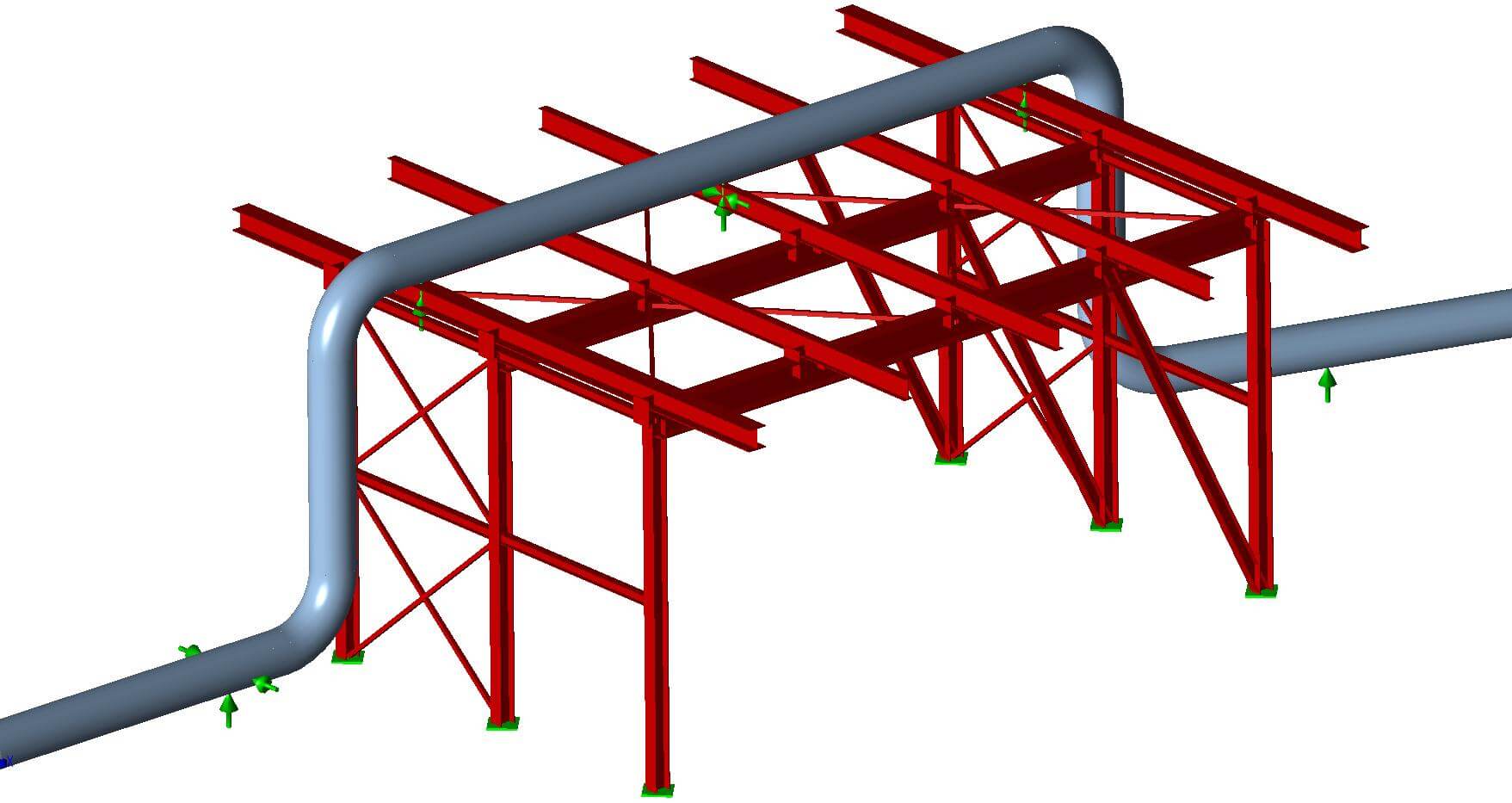Surge And Dynamic Stress Analysis
During the construction of a 1.6 km long steel pipeline intended for the offloading of naphtha from ships at a jetty, a thorough surge analysis was undertaken. This analysis aimed to evaluate the pipeline’s performance under various transient upset scenarios. Following this, a dynamic stress and flexibility study was conducted using the data derived from the transient simulation.
Analysis
To start, a transient one-dimensional fluid model of the entire pipeline—from the loading arm to the storage tank—was developed. The simulation and analysis of the different transient upset scenarios were performed using BOSfluids, a specialized software package designed for analyzing one-dimensional fluid transients.
From this fluid model, the transient unbalanced forces were extracted. These forces were then applied in a dynamic mechanical time-history analysis using CAESAR II. For this dynamic analysis, a detailed stress model, inclusive of steel structures, was created. The purpose was to calculate and assess the dynamic stresses, displacements, and support reactions resulting from various transient upset conditions.
Results
The surge analysis revealed that the most critical transient scenario involved the rapid closure of the emergency valve located in the loading arm. This event causes the pressure downstream of the closed emergency valve to drop swiftly to vapor pressure levels, resulting in column separation. As the flow decelerates sufficiently, the pressure recovers, causing the implosion of gas bubbles and leading to column collision. These collisions generate large pressure waves of very short duration, which propagate through the system at the speed of sound.
“The pressure downstream of the closed emergency valve drops rapidly to vapor pressure levels and as a result, column separation occurs.”
These pressure waves create substantial unbalanced forces between pairs of elbows in the pipeline. The dynamic stress calculations indicated that these large unbalanced forces led to excessive stresses and displacements.
To address this issue, a solution was proposed to control and stabilize the liquid column’s slowdown using a valve located further downstream in the line. Implementing this solution eliminates column collision and the associated pressure waves. As a result, the dynamic stresses remain within the allowable limits for this upset scenario, ensuring the pipeline’s structural integrity and operational safety.

